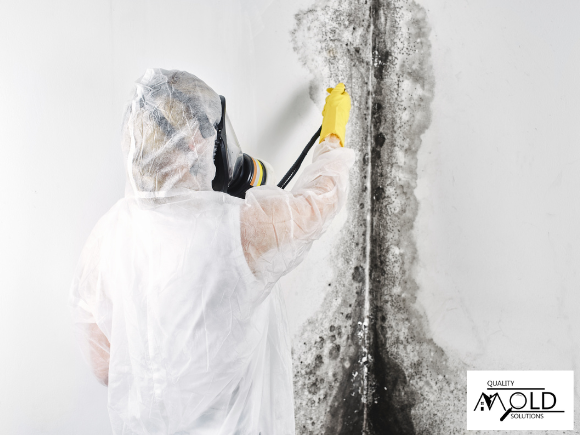When dealing with a mold problem in your home or business, the remediation process is a critical step in removing the mold and addressing the conditions that allowed it to grow. However, simply completing the remediation is not enough to ensure that your property is truly mold-free and safe. Post-remediation mold testing is an essential step in verifying that the mold removal process was successful and that your environment is healthy.
Why Post-Remediation Mold Testing Is Crucial
-
Verification of Mold Removal
 The primary goal of post-remediation mold testing is to verify that the mold has been effectively removed from the affected areas. During remediation, mold spores can become airborne and spread to other parts of the property. Even if the visible mold has been cleaned up, it can still be present. Testing after remediation ensures that the air and surfaces are free of mold spores and that the cleanup was thorough.
The primary goal of post-remediation mold testing is to verify that the mold has been effectively removed from the affected areas. During remediation, mold spores can become airborne and spread to other parts of the property. Even if the visible mold has been cleaned up, it can still be present. Testing after remediation ensures that the air and surfaces are free of mold spores and that the cleanup was thorough.
-
Ensuring a Safe Environment
- Mold exposure can cause a range of health issues, from allergic reactions to more serious respiratory problems. Post-remediation testing helps confirm that the environment is safe for inhabitants, reducing the risk of exposure to harmful mold spores. This is especially important in homes with vulnerable individuals, such as children, the elderly, or those with compromised immune systems.
-
Identifying Hidden Mold
- Mold can sometimes hide in places that are not immediately visible, such as behind walls, under flooring, or within HVAC systems. Post-remediation testing can detect mold spores in the air or on surfaces that may indicate hidden mold growth. This allows for further investigation and remediation if necessary, preventing future mold problems.
-
Compliance with Standards and Guidelines
- In some cases, post-remediation testing may be required by local regulations, insurance companies, or property management guidelines. Ensuring compliance with these standards not only protects the property owner but also provides peace of mind that the remediation process was conducted properly.
-
Preventing Recurrence of Mold
- Post-remediation testing can help identify if there are any remaining conditions that could lead to future mold growth, such as ongoing moisture issues or inadequate ventilation. By addressing these issues early on, you can prevent mold from returning and avoid the need for further remediation in the future.
What Does Post-Remediation Mold Testing Involve?
Post-remediation mold testing typically involves a combination of air and surface sampling, as well as a thorough visual inspection of the remediated areas. Here’s what you can expect during the testing process:
-
Air Sampling:
- Air samples are collected from both the remediated area and other parts of the property to compare the concentration of mold spores. A significant reduction in mold spore levels in the remediated area is a positive indicator that the remediation was successful.
-
Surface Sampling:
- Surface samples are taken from areas that were cleaned during remediation to ensure that no mold spores remain. This testing can be particularly important for porous materials that were treated but not removed.
-
Visual Inspection:
- A certified mold inspector will conduct a visual inspection of the remediated area to check for any signs of remaining mold, moisture, or damage. The inspector will also verify that containment barriers were removed correctly and that the area was properly dried.
-
Final Report:
- After the testing is complete, a final report is generated that details the findings and confirms whether the remediation was successful. This report can be provided to property owners, insurance companies, or regulatory bodies as proof of successful mold removal


